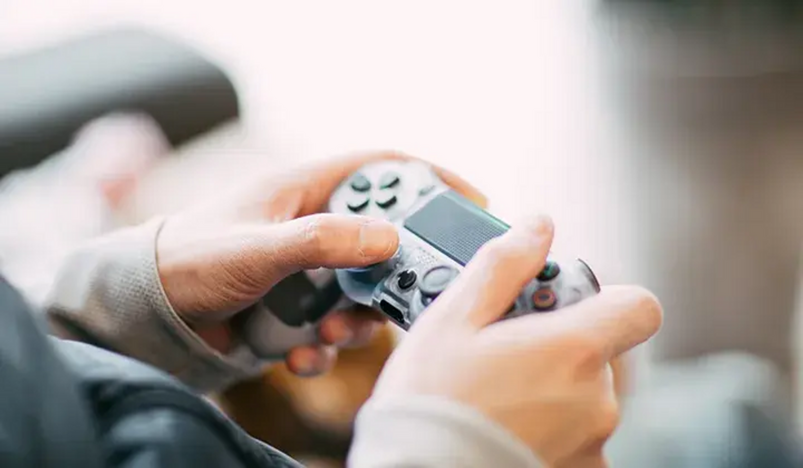Gaming Addiction: Understanding the Warning Signs and Taking Action

By
Shahbaz Ahmed - April 23, 2025

Gaming Addiction
In recent years, video games have evolved from simple recreational activities to immersive, complex experiences that captivate billions of players worldwide. While gaming offers many benefits—from cognitive development to social connection—it can also lead to problematic usage patterns. Gaming addiction, now formally recognized by health organizations including the World Health Organization, represents a serious concern affecting players of all ages. This comprehensive guide explores the nature of gaming addiction, its warning signs, impacts, and effective intervention strategies.
Understanding Gaming Addiction
Gaming addiction, also termed "Gaming Disorder" by the WHO, describes a pattern of persistent gaming behavior characterized by impaired control, increasing priority given to gaming over other activities, and continuation despite negative consequences.
The Science Behind Gaming Addiction
To effectively address gaming addiction, it helps to understand its underlying mechanisms:
- Reward pathways: Games trigger dopamine release in the brain's reward center, similar to other addictive behaviors
- Variable reward schedules: Unpredictable rewards (like rare item drops or random achievements) are particularly effective at encouraging continued play
- Design elements: Features like infinite progression systems, social obligations, and limited-time events specifically encourage prolonged engagement
- Escapism motivation: Many excessive gamers use gaming to escape real-world problems or negative emotions
Risk Factors for Gaming Addiction
Certain factors may increase vulnerability to problematic gaming:
- Pre-existing mental health conditions: Depression, anxiety, ADHD, and social anxiety correlate with higher risk
- Personality traits: Impulsivity, sensation-seeking, and low self-esteem can contribute
- Environmental factors: Limited social support, high stress, and easy access to games without boundaries
- Age and development: Adolescents with still-developing prefrontal cortex may be particularly vulnerable
- Game types: Certain game genres, particularly MMORPGs and competitive online games, show stronger associations with problematic use
Warning Signs of Gaming Addiction
Identifying gaming addiction early improves outcomes. Look for these indicators:
Behavioral Signs
Observable changes in actions and habits:
- Increasing time commitment: Gradually spending more hours gaming, often losing track of time
- Failed attempts to cut back: Multiple unsuccessful efforts to reduce gaming time
- Displacement of other activities: Abandoning previously enjoyed hobbies and interests
- Gaming to regulate emotions: Turning to games when upset, stressed, or anxious
- Continued gaming despite problems: Persistent play despite awareness of negative consequences
- Deception around gaming: Lying about or hiding the amount of time spent playing
- Jeopardizing opportunities: Missing work, school, or social events because of gaming
Psychological Signs
Internal experiences that may indicate addiction:
- Preoccupation: Constant thoughts about previous or future gaming sessions
- Withdrawal symptoms: Irritability, anxiety, or sadness when unable to play
- Tolerance: Needing to play more to achieve the same level of excitement or satisfaction
- Unsuccessful control attempts: Inability to stick to self-imposed limits
- Loss of interest: Diminished excitement about non-gaming activities
- Using games as escape: Primarily gaming to avoid problems or negative feelings
Physical Signs
Bodily manifestations of excessive gaming:
- Sleep disturbances: Altered sleep patterns, insomnia, or daytime fatigue
- Physical complaints: Headaches, eye strain, or carpal tunnel syndrome
- Poor personal hygiene: Neglecting basic self-care routines
- Changes in eating habits: Skipping meals or eating while gaming
- Sedentary lifestyle consequences: Weight changes or decreased physical fitness
Social Signs
Changes in interpersonal dynamics:
- Withdrawal from relationships: Reduced interaction with family and friends
- Online relationships prioritized: Valuing in-game connections over real-world relationships
- Social conflicts: Arguments about gaming habits with concerned family or friends
- Social anxiety: Increasing discomfort in real-world social situations
- Identity centered on gaming: Self-worth primarily derived from gaming achievements
The Impact of Gaming Addiction
Gaming addiction can affect multiple life dimensions:
Physical Health Consequences
- Sleep deprivation: Irregular sleep patterns affecting overall health
- Sedentary lifestyle issues: Increased risk of obesity, cardiovascular problems
- Repetitive stress injuries: Wrist, hand, and back problems
- Neglected physical needs: Poor nutrition, hydration, and exercise
- Digital eye strain: Vision problems from extended screen exposure
Mental Health Effects
- Comorbid conditions: Development or worsening of anxiety and depression
- Emotional regulation difficulties: Increased irritability and mood swings
- Cognitive impacts: Attention problems and reduced concentration for non-gaming tasks
- Stress response issues: Heightened reactions to minor frustrations
- Self-esteem tied to gaming: Self-worth becoming dependent on in-game accomplishments
Academic and Professional Impact
- Declining performance: Lower grades or work productivity
- Absenteeism: Missing classes or work shifts
- Reduced career development: Neglecting skill-building opportunities
- Financial consequences: Spending on games despite financial strain
- Sleep-related performance issues: Impaired cognitive function affecting work/school
Relationship Consequences
- Family conflict: Tension and arguments about gaming habits
- Social isolation: Withdrawal from in-person social activities
- Relationship breakdown: Neglect of romantic partnerships
- Parenting impacts: Reduced attention to children's needs
- Trust issues: Damaged relationships due to deception about gaming
Special Considerations Across Age Groups
Gaming addiction manifests differently across the lifespan:
Children and Gaming Addiction
Young players face unique concerns:
- Developmental impacts: Potential effects on brain development and social skill acquisition
- Educational disruption: Interference with learning and academic progress
- Boundary testing: Particular difficulty self-regulating without external controls
- Parent-child conflict: Power struggles around gaming restrictions
- Age-inappropriate content: Exposure to mature themes beyond developmental readiness
Adolescents and Gaming
Teens represent a particularly vulnerable group:
- Identity formation concerns: Over-identification with game personas
- Peer pressure factors: Social status within gaming communities
- Academic consequences: Critical educational milestones potentially affected
- Family separation issues: Gaming as a tool for establishing independence
- Sleep disruption: Interference with already-shifting adolescent sleep patterns
Adults and Gaming Addiction
Gaming addiction in adults presents different challenges:
- Workplace impacts: Career progression affected by gaming habits
- Relationship strain: Particularly in romantic partnerships and parenting
- Financial responsibilities: Potential neglect of financial obligations
- Extended consequences: Longer-term health impacts from sustained problematic use
- Shame and concealment: Often hiding the extent of gaming from others
Intervention Strategies for Gaming Addiction
Effectively addressing gaming addiction requires comprehensive approaches:
Self-Help Approaches
Steps individuals can take:
- Track gaming time: Use apps to monitor actual hours spent gaming
- Set clear limits: Establish specific time boundaries for play
- Create physical barriers: Remove gaming equipment from bedrooms
- Use external controls: Install time-limiting software
- Develop alternative activities: Rebuild interest in non-gaming hobbies
- Practice mindfulness: Become aware of triggers and gaming urges
- Build support networks: Connect with others working on similar issues
Family-Based Interventions
How loved ones can help:
- Open, non-judgmental communication: Express concerns without accusation
- Collaborative boundary setting: Work together to establish reasonable limits
- Environmental modifications: Create tech-free zones and times in the home
- Positive reinforcement: Recognize and reward efforts to reduce gaming
- Parental control implementation: Use tools like Rqeab to manage gaming time and content
- Family activities: Develop engaging alternatives to gaming
- Consistent enforcement: Maintain agreed-upon boundaries
Professional Treatment Options
When additional help is needed:
- Cognitive-Behavioral Therapy (CBT): Addressing thought patterns and behaviors related to gaming
- Family therapy: Healing family dynamics affected by gaming issues
- Group therapy: Connecting with others facing similar challenges
- Motivational interviewing: Building internal motivation for change
- Residential programs: Immersive treatment for severe cases
- Treatment of comorbid conditions: Addressing underlying depression, anxiety, or ADHD
- Digital detox programs: Structured time away from technology
Technology-Based Solutions
Using technology to manage technology:
- Parental control and ad blocking Apps: Applications like Rqeab can help you monitor and limit gaming time
- Screen time management tools: Built-in operating system features that restrict usage, and since Rqeab.com is a comprehensive solution it also helps you control screen time.
- Content filtering: Limiting access to certain game types
- Usage analytics: Apps that provide insight into gaming patterns
- Gradual reduction tools: Programs that help systematically decrease gaming time
Prevention Strategies
Preventing gaming addiction is preferable to treating it:
Early Education and Awareness
- Digital literacy programs: Teaching healthy technology use from young ages
- Media education: Helping children understand game design and marketing tactics
- Open discussions: Regular conversations about healthy gaming habits
- Warning signs awareness: Educating parents and educators about early indicators
Healthy Gaming Habits
Fostering balanced approaches from the start:
- Clear time boundaries: Establishing gaming limitations before problems develop
- Tech-free zones: Creating spaces where devices aren't permitted
- Balance with other activities: Ensuring gaming is one of many interests
- Social gaming: Encouraging games that involve real-world interaction
- Critical consumption: Teaching evaluation of game content and design
Supportive Environments
Creating contexts that promote balance:
- Family media plans: Collaborative approaches to technology use
- Role modeling: Adults demonstrating healthy technology habits
- Alternative activities: Providing engaging non-digital options
- Monitoring systems: Age-appropriate oversight using tools like Rqeab
- Consistent expectations: Clear rules across different settings
The Gaming Industry's Role
Game developers and platforms have responsibilities:
- Ethical design practices: Creating games that don't exploit psychological vulnerabilities
- Player protection features: Building in play-time reminders and limits
- Age verification systems: Ensuring appropriate content for different ages
- Transparent mechanics: Clearly disclosing odds in randomized reward systems
- Research support: Funding studies on healthy gaming practices
Recovery and Long-Term Management
Recovery from gaming addiction is possible:
Setting Realistic Goals
Most successful approaches don't require complete abstinence:
- Moderation vs. abstinence: Determining appropriate levels of engagement
- Identifying problematic games: Some may need to be avoided while others can be played moderately
- Progressive goal setting: Gradually reducing time spent gaming
- Focus on function: Prioritizing life functioning over arbitrary time limits
- Sustainable approaches: Creating manageable long-term plans
Building a Balanced Digital Life
Recovery means developing broader interests:
- Rediscovering former hobbies: Reconnecting with previously enjoyed activities
- Physical wellness focus: Rebuilding exercise routines and sleep patterns
- Social reconnection: Strengthening in-person relationships
- Mindful technology use: Being intentional about all screen activities
Identity expansion: Developing self-concept beyond gaming achievements

By
Shahbaz Ahmed - April 23, 2025

.jpg)
.jpg)


Leave a comment